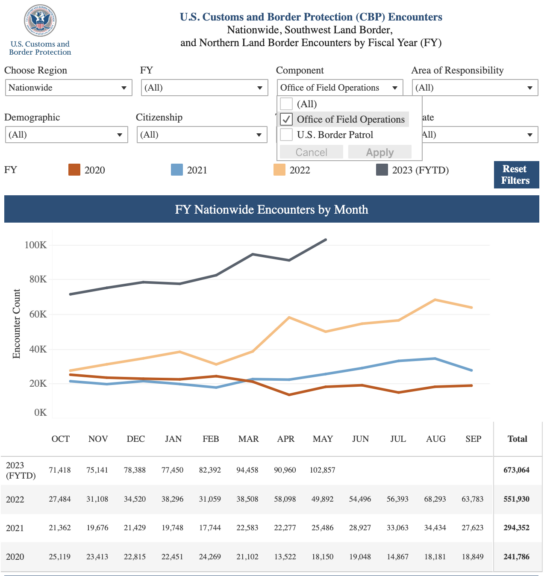Recent reports suggesting an all-time low in illegal immigration at the U.S. Southern border cannot be taken at face value, according to a former official from the Department of Homeland Security (DHS). In a sharp departure from the mainstream narrative of plummeted illegal crossings, a critical appraisal of reported immigration statistics reveals a startlingly different picture. The figures, described by some as misleading, underscore the urgent need for a comprehensive and brutally honest insight into the handling and interpretation of these numbers.


On the surface, the numbers present an ostensibly significant decrease in illegal immigration. CBS News recently reported approximately 100,000 apprehensions of illegal immigrants at the US Southern border, a stark drop from an estimated 169,000 a month ago reported in May. On closer scrutiny, however, these figures do not account for the precipitous rise in immigrants proceeding through ports of entry owing to lax U.S parole policies and are therefore concerning, given their potential for putatively distorting our understanding of the situation at hand.
Stepping into the limelight is Lora Ries, director of the Border Security and Immigration Center at The Heritage Foundation, who attributes the steep drop to relaxed parole rules. According to Ries, these policies essentially channel immigrants to use the entry ports rather than spaces between them resulting in what seems to be a decrease in the immigrant influx. However, she warns, the number of illegal and inadmissible aliens, including those that bypass border security entirely, remains alarmingly high.
“The administration is using a shell game,” says Ries, a former acting deputy chief of staff at DHS. “They’re sending people through ports of entry instead of between the ports, and then declaring that an improvement on the border.” Consequently, implying a deceivingly stable incidence of illegal and inadmissible aliens, even as the number steadily rises.
The preliminary numbers released by CBS have yet to be officially sanctioned for public viewing. However, an examination of current data accessible on the DHS website depicts an upward trend of immigrants processed by the U.S. Customs and Border Protection’s Office of Field Operations, which handles processing at ports of entry, ever since President Biden took office.
Significantly, these preliminary figures from CBS News fail to account for the migrants processed at the ports of entry. This glaring omission, coupled with policies from the Biden administration that encourage immigrants from certain countries to use the said entry points, offers a skewed perspective on the nature of illegal immigration.
As Ries succinctly articulates, parole programs are the main drivers behind the change in the method of counting illegal immigrants under the Biden administration. “When you do the math of those programs and add those back to the numbers of people crossing between the courts, you’re still at around 200,000 encounters a month,” argues Ries. “And that’s the number that the administration simply doesn’t want out there.”
In light of recent policy changes and an apparent manipulation in the reporting of these numbers, it is clear that the public outcry for transparency in such a critical matter is not without merit. The current administration must take immediate steps to ensure not only rigorous border security but also guarantee the veracity of data being presented to the public.
The accuracy of such numbers is not merely a matter of heated debate, it fundamentally shapes the government’s approach to immigration, and, consequently, the lives of thousands of people attempting to cross into the United States. In essence, the veritable shell game that appears to be at play in the administration’s handling of these statistics is indeed a matter of paramount importance. The key is accuracy and transparency. The need for a dedicated pursuit of truth in such full-bodied reporting is critical, imperative, and non-negotiable.



